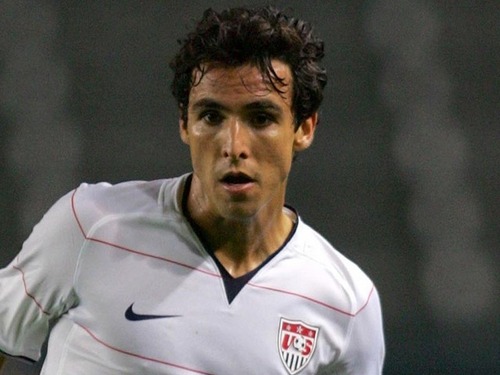
Jonathan Bornstein came back earlier than expected after PRP therapy
Jonathan Bornstein was one of the first soccer players in the USA to undergo Platelet Rich Plasma therapy, now known commonly as PRP. Blood was drawn from the Chivas player and then centrifuged leaving mostly platelets. These cell bodies are instrumental in blood clotting but also appear to contain growth factors that help repair damaged tissue. The serum was then injected back into his injured knee.
Bornstein who feared out being with a ligament tear for six weeks to ten weeks was able to speed up his recovery and was back to match fitness in about five weeks. He had halved the time which could make all the difference to a player with national ambitions and a coach under pressure to deliver success to his side.
Spain has been a pioneer in this promising new therapy having established its used in the early 90s. A group from Barcelona led by Ramon Cugat and Oscar Ares have been using PRP to accelerate the healing of soccer injuries. Cugat, the head of Mutualidad de Futbolistas Catalanes cited the platelet’s regenerative factors as responsible for the miraculous recovery in the case of Xavi after an Achilles tendon grade 2 tear threatened to sideline the midfield maestro for the 2010 season. He was able to come back to the pitch two months later.
In the two years since Bornstein’s return, PRP, has moved from the realm of professional athletes to the recreational sportsman who suffers a hamstring injury. The technique has been fueled by the endorsements of celebrity athletes like Tiger Woods who used platelet rich injections after knee surgery and was back on the greens earlier than expected.
NFL safety Troy Polamalu, he off the bounteous dreads and flying tackles along with wide receiver Hines Ward also underwent PRP and was back in time for the 2009 Super Bowl to lead the Steelers to victory over the Arizona Cardinals. Both players feared sitting out the most important game in an NFL player’s career with knee and calf injuries.
In Takashi Saito’s case PRP obviated the need for a Tommy John procedure to replace a partially torn ulnar collateral ligament in the elbow joint. The LA Dodger closer was able to get back to pitching in weeks instead of spending the year recuperating from such an invasive surgical intervention.
Athletes like Woods and Polamalu are not the only ones benefiting from this technique. The NYT reports that these celebrity endorsements have proved a boon for sports medicine specialists and orthopedic surgeons who are now catering to a growing demand for PRP by consumers who see no permanent cure to their own string of similar ailments.The attraction behind PRP appears to be the fact that it is the body that is providing its own antidote, i.e., it is natural. The problem is that in this stampede the obvious rigorous peer research that validates the efficacy of this procedure is either being eschewed or overlooked.
A much cited study looking at Achilles tendon injuries conducted by researchers in Netherlands concluded no obvious benefits after observing no significant differences between subjects who were injected with PRP and normal saline. Another study investigating tennis elbow showed some improvement with PRP but the results seem to have been confounded by the control group receiving steroids which has obvious short term relief but ultimately leads to the destruction of cellular tissue. A more recent study looking into rotator cuff surgeries used PRP to diffuse locally for a more concentrated effect but found no improvement over a placebo. The efforts are complicated by the fact tendons and ligaments factors have different levels of vascularization (blood supply), there are four different variations in preparation, and the choice of randomized, double blind trials can make a difference.
The editor of the newsletter published by the American Orthopedics Association, Dr. S. Terry Canale, recently attempted to link these conflicting results while acknowledging the anecdotal efficacy of PRP but was forced into ambivalence. “It went on and on,” Dr. Canale said. “There was no obvious conclusion.” The lack of scientific evidence means PRP continues to come out of pocket.
In the meantime sports medicine has moved onto the next best thing which is PRP enhanced autologous stem cells which underpins the same attractive qualities of the body providing its own cure. The driver behind this new approach is MLS pitcher Bartolo Colon who spent all of 2010 nursing a torn rotator cuff and elbow damage to stage a remarkable recovery after his MD, Joseph Purita administered PRP packing Colon’s shoulder and elbow beforehand with his own fat and bone marrow cells. The science behind this sounds intuitive as growth factors maybe less influential on structures that lack cells but “stem cells” provide a target rich environment which might regenerate into intact tendons and ligaments. However, these are but assumptions, clearly circumstantial, and research once again might have to play catch up with a burgeoning demand for a magic bullet.